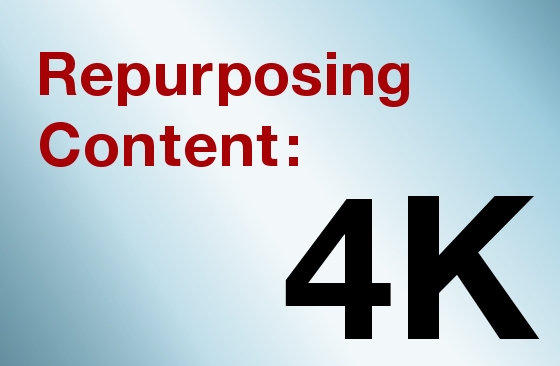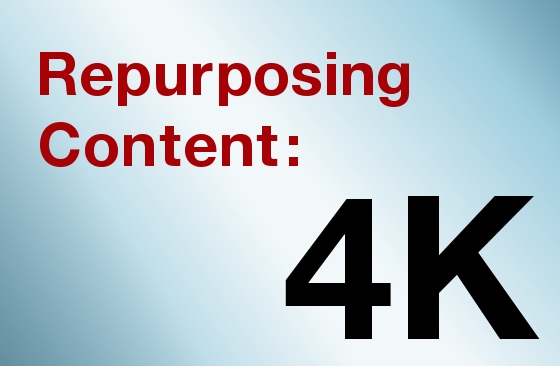

Think repurposing video content is the same as upscaling it? Think again. We explain the difference and what it means for 4K.
As a regular reader of RedShark, you more than likely know that the rush to 4K is underway. Broadcasters, producers, directors, shooters and post professionals are either investigating ways to manage 4K acquisition, workflow and delivery, or are already implementing such changes. But what about the vast catalog of content out there? How do we ready this produced material for UHD display and as assets in a 4K workflow?
Upscaling vs. Repurposing
For the layman, the simple answer is to upscale the content. For the professional, upscaling is the flat-out wrong approach. Upscaling refers to the algorhythmic conversion of lower resolution video material to a higher resolution standard. Often, this occurs at the end-user level: for example, 4K televisions and receivers take the heavily-compressed HD content and increase its resolution on-the-fly, computationally filling in the gaps (as 4K has 4-times the pixels of HD). The result is pretty good, but there's a limit to how effective such a process can be, given high compression of the source stream.
Repurposing video, on the other hand, concerns taking the very best available version of that content, usually from archival masters but occasionally from the camera originals, and using an optical scanner for the conversion. This ensures the highest-quality conversion, capable of producing images suitable for 4K presentation and adoption in current 4K post projects.
Repurposing for 4K
Just as there's a rush towards 4K acquisition and delivery, there's also a race to retrofit post houses with 4K UHD scanners to bring forward all that sub-4K content for display in today's homes and use in productions. One such company, NanoTech Entertainment, located in Hollywood, is in the process of updating its facilities, with a new 4K scanner at the top of the list. Expect this to be a growing trend in post houses, as companies such as NanoTech and its partner, SonicPool Post Production, look to keep stride with these tech advancements, while extending a guiding hand to the world of content produced before our switch to 4K.
Tags: Post & VFX



Comments